Finding baby roaches in your home isn’t just a minor pest problem—it’s proof that cockroaches are actively breeding on your property. After four years as a registered technician serving the DC metro area, I’ve seen how spotting these tiny nymphs early can make the difference between a manageable situation and a full-blown infestation that costs thousands to resolve.
Baby cockroaches look like miniature versions of adult roaches, but they’re wingless, often lighter in color, and move much faster than their parents. The key thing to understand is that if you see even one baby roach, there are likely dozens more hiding in your walls, cabinets, and other dark spaces.
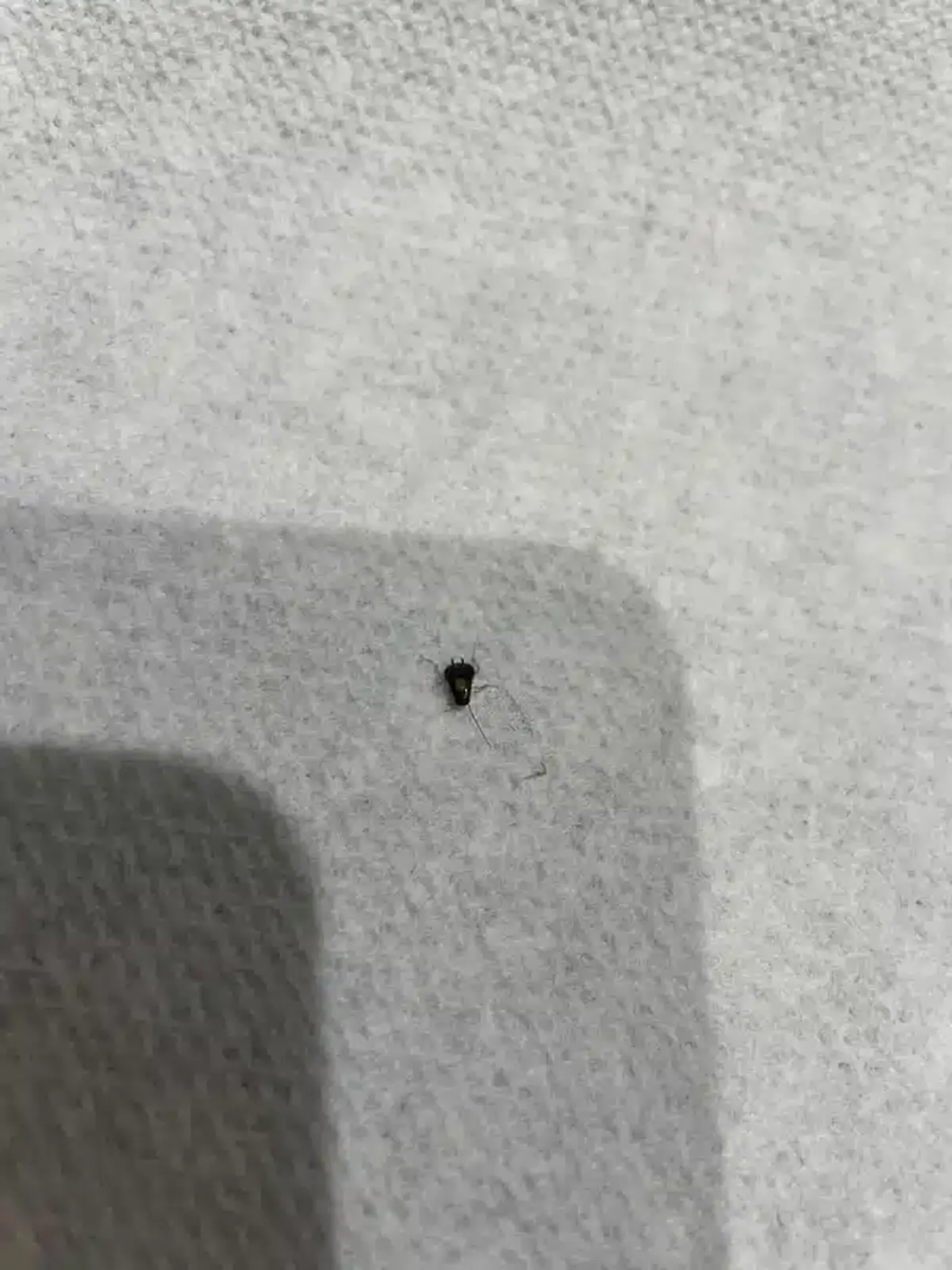
What Baby Cockroaches Look Like
Baby cockroaches look like smaller, wingless versions of adult cockroaches. These nymphs share the same basic body shape as adults but lack the fully developed wings and darker coloration. Depending on the species, a baby cockroach can range from the size of a grain of rice to about half an inch in length.
The appearance of baby cockroaches varies significantly based on their age and species. German cockroach nymphs start at around 3mm and have distinctive black and brown stripes, while American cockroach nymphs begin at about 5mm with a more uniform grayish color. Baby oriental cockroaches are typically reddish-brown when young, gradually darkening to the jet-black color of adults.

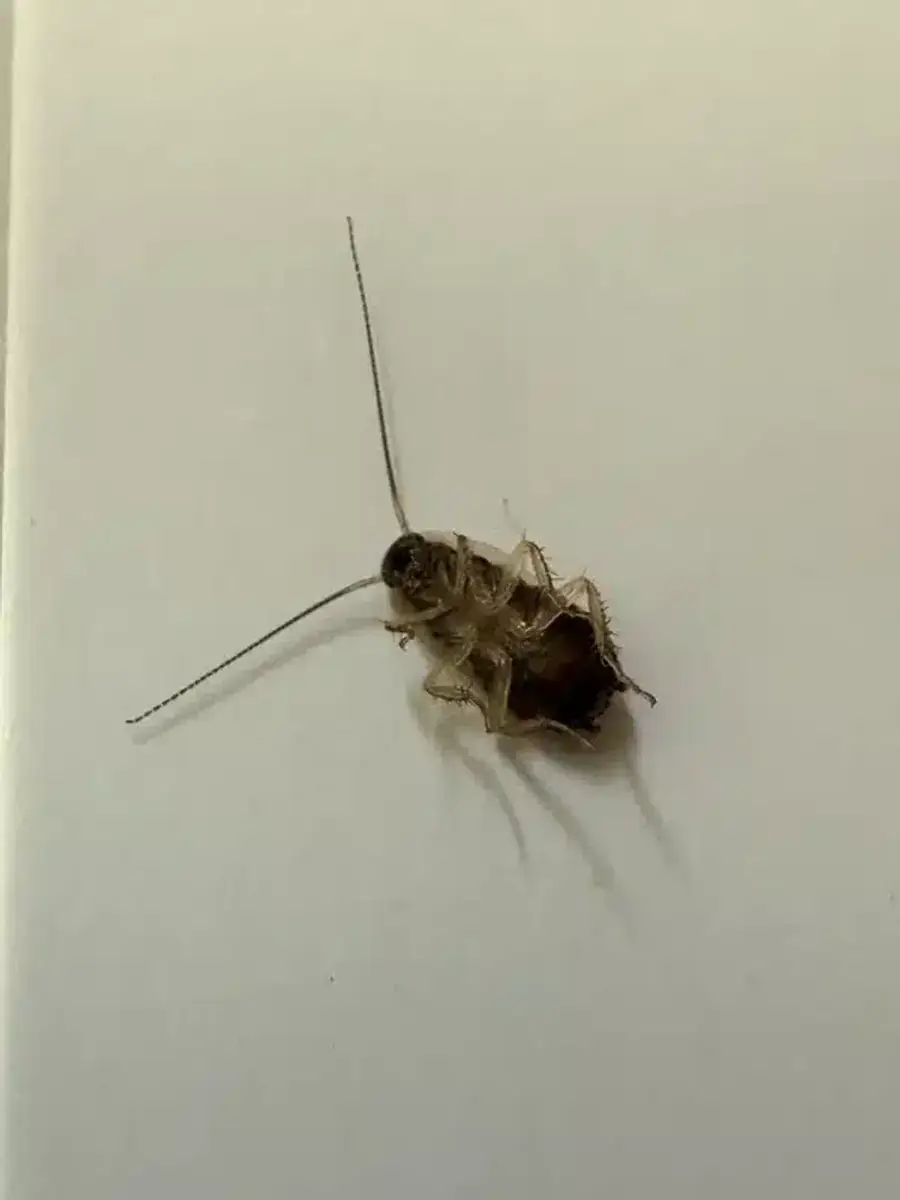
Size Variations by Species of Baby Cockroaches
Baby roaches look different depending on which species of cockroaches you’re dealing with. German cockroach nymphs are the smallest, starting at just 3mm when they first hatch. Baby German cockroaches can reach about 10mm before their final molt into adults.
| Species | Newly Hatched Size | Final Nymph Size |
|---|---|---|
| German Cockroach | 3mm | 10mm |
| American Cockroach | 5mm | 30mm |
| Oriental Cockroach | 6mm | 12mm |
| Brown-banded Cockroach | 1.5mm | 10mm |
American cockroaches are typically much larger. Baby american cockroaches start around 5mm but can grow up to 30mm during their nymph stage. Baby oriental roaches fall somewhere in between, ranging from 6-12mm throughout their development. Brown-banded cockroach nymphs stay relatively small, measuring between 1.5-10mm.
Color Differences from Adults
One of the most distinctive features that help you identify baby cockroaches is their coloration. Baby roaches usually appear much lighter than adults, especially right after molting. During this “white or light” phase, cockroach nymphs are small and almost translucent before their exoskeleton hardens and darkens.
Baby german roaches maintain the characteristic two dark stripes even as nymphs, though they’re more pronounced against their lighter background. American cockroach nymphs start whitish and gradually develop the reddish-brown coloration before becoming the mahogany color of adults. Baby oriental cockroaches begin reddish-brown and slowly darken to the glossy black of mature oriental cockroaches.
Key Physical Features of Baby Roaches
Baby cockroaches have six spiny legs that give them incredible speed and agility. These legs are proportionally longer compared to their body size than adult cockroaches, which explains why baby roaches can move so quickly when disturbed. The spines on their legs help them grip surfaces and navigate through tight spaces.
The most obvious difference between nymph cockroaches and adults is the complete absence of wings. Cockroach nymphs are small and wingless throughout their entire development until their final molt. Even late-stage nymphs only show small wing pads that gradually enlarge with each molt but never become functional until adulthood.
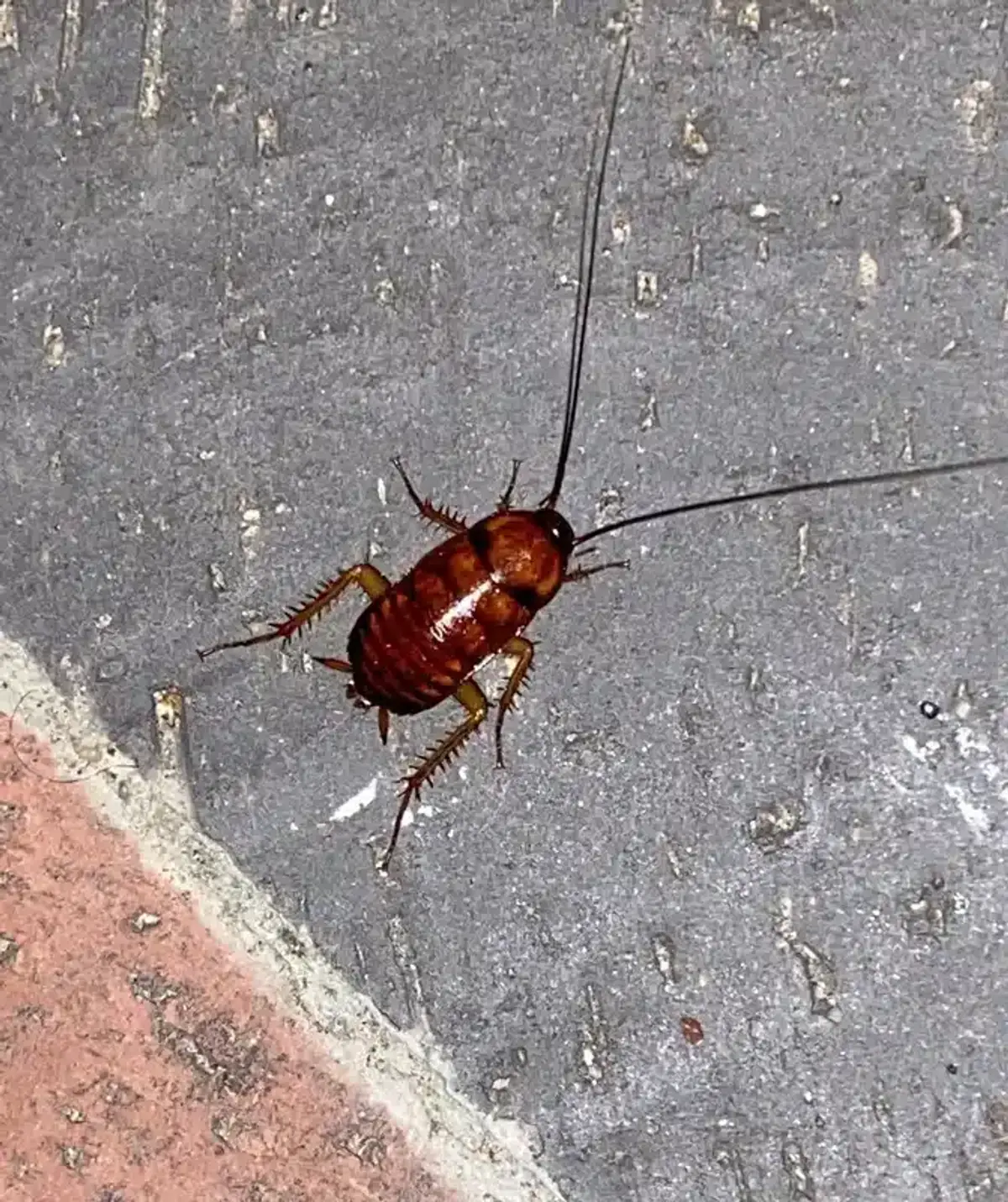
Antennae and Movement Patterns
Cockroaches have long antennae that are constantly moving as they explore their environment. Baby roaches tend to be much more active than adults, darting quickly from hiding spot to hiding spot. This rapid movement often catches homeowners off guard because baby roaches can move faster relative to their size than adult roaches.
Baby roaches begin exploring their environment immediately after hatching, following scent trails left by adult cockroaches to find food and water sources. Their antennae are proportionally similar to adults, making them highly sensitive to vibrations and chemical signals.
Why Seeing Baby Roaches Indicates a Breeding Population
When you see baby roaches in your home, it means female cockroaches have been successfully reproducing on your property. This indicates the infestation has likely been established for weeks or months, depending on the species. German roaches can complete their development from egg to adult in just 50-60 days under ideal conditions.
Finding baby cockroaches in your home is particularly concerning because it proves you have both male and female adult cockroaches present. The presence of multiple sizes of nymphs suggests ongoing reproduction rather than a one-time introduction of cockroaches from outside sources.
In my experience serving the DMV area, seeing even one baby cockroach typically means there are dozens more hiding nearby. Our family business has been dealing with cockroach infestations for over 50 years, and the pattern is almost always the same—where there’s one nymph, there’s a colony.
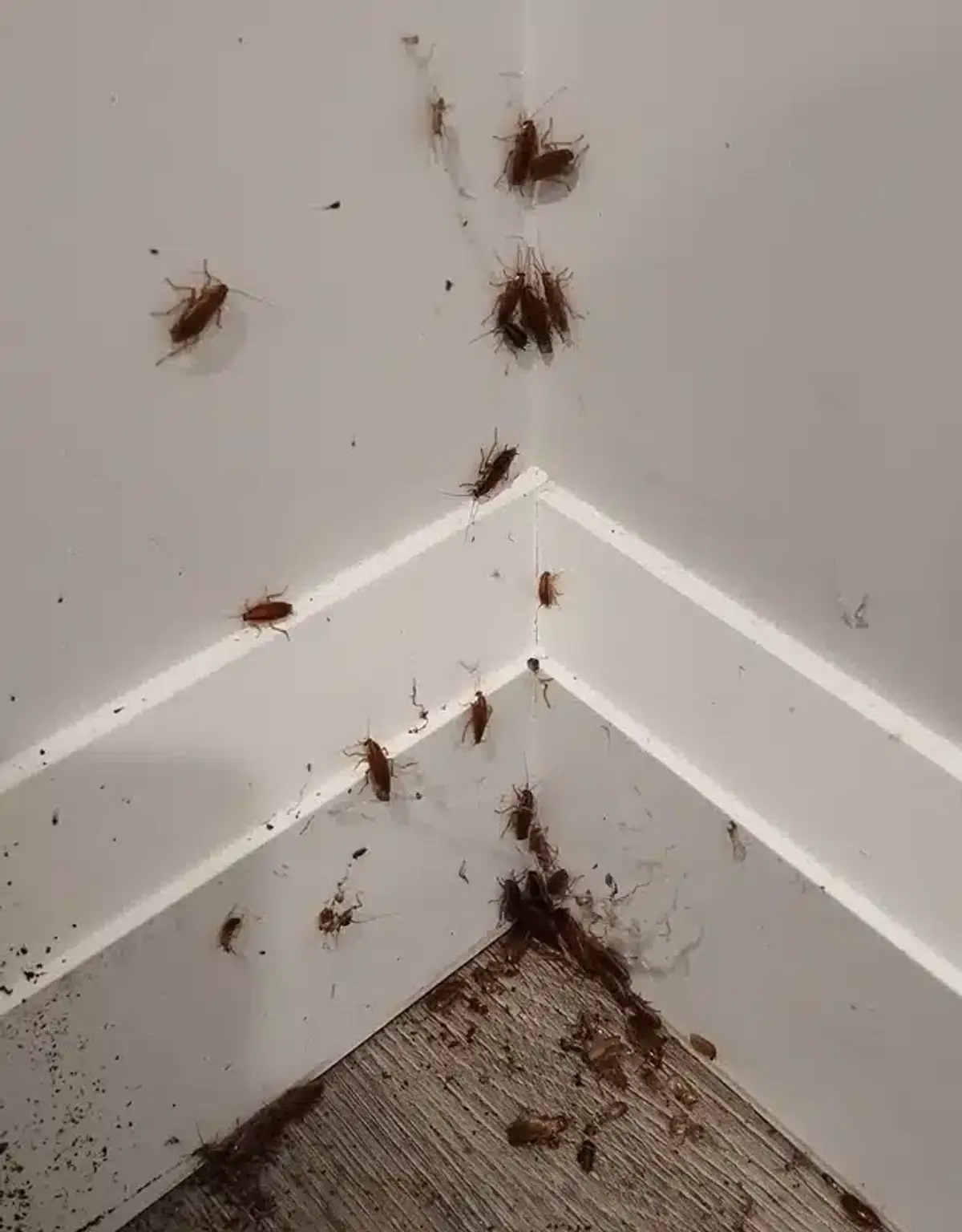
Development Timeline to Adulthood
The development timeline helps you identify baby cockroaches and understand how long an infestation has been active. Baby german cockroaches go through 5-7 instars over approximately 50-60 days before becoming adults. American cockroaches are typically slower, taking 6-12 months to reach maturity through 10-13 molts.
If you spot a baby roach that’s very small (first or second instar), the infestation is relatively new—probably less than 2 weeks for German roaches. However, if you find baby cockroaches of various sizes, the colony has been established for at least a month and likely longer.
The Molting Process and Shed Skins
Baby roaches begin their development by molting multiple times as they grow. Each time a cockroach nymph molts, it leaves behind a translucent exoskeleton called an exuvia. These shed skins often accumulate in hiding places and can be just as important for identification as seeing live baby roaches.
Looking for these papery, translucent shells in drawer corners, behind appliances, or in cabinet voids can help you identify a baby roach problem even when you haven’t seen the insects themselves. These shed skins also contribute to allergen levels in homes, particularly problematic for children with asthma.
Right after molting, baby cockroaches appear white or light colored before their new exoskeleton hardens and darkens. This “ghost roach” phase often confuses homeowners who think they’re seeing a different type of insect entirely.
Baby Cockroaches vs Other Insects: Common Mix-ups
Baby cockroaches vs bed bugs is one of the most frequent misidentifications I encounter. Bed bug nymphs are wider, more oval-shaped, and move much slower than baby roaches. Baby cockroaches have long antennae and spiny legs, while bed bug nymphs have shorter antennae and a more rounded body shape.
Key Differences: Baby Cockroaches vs Other Pests
- vs Bed Bugs: Baby roaches are longer, flatter, and have prominent antennae; bed bugs are oval and move slower.
- vs Carpet Beetles: Cockroach nymphs are wingless; carpet beetles have hard wing covers and can fly.
- vs Booklice: Baby roaches are larger (3mm+) with hard exoskeletons; booklice are under 2mm and soft-bodied.
- Movement Pattern: Baby cockroaches dart quickly toward dark spaces when disturbed.
Other insects like carpet beetles are often mistaken for baby cockroaches, but beetles have hard shells and can fly even as juveniles. Booklice are much smaller (under 2mm) and have a softer, pale appearance compared to the harder exoskeleton of cockroach nymphs.
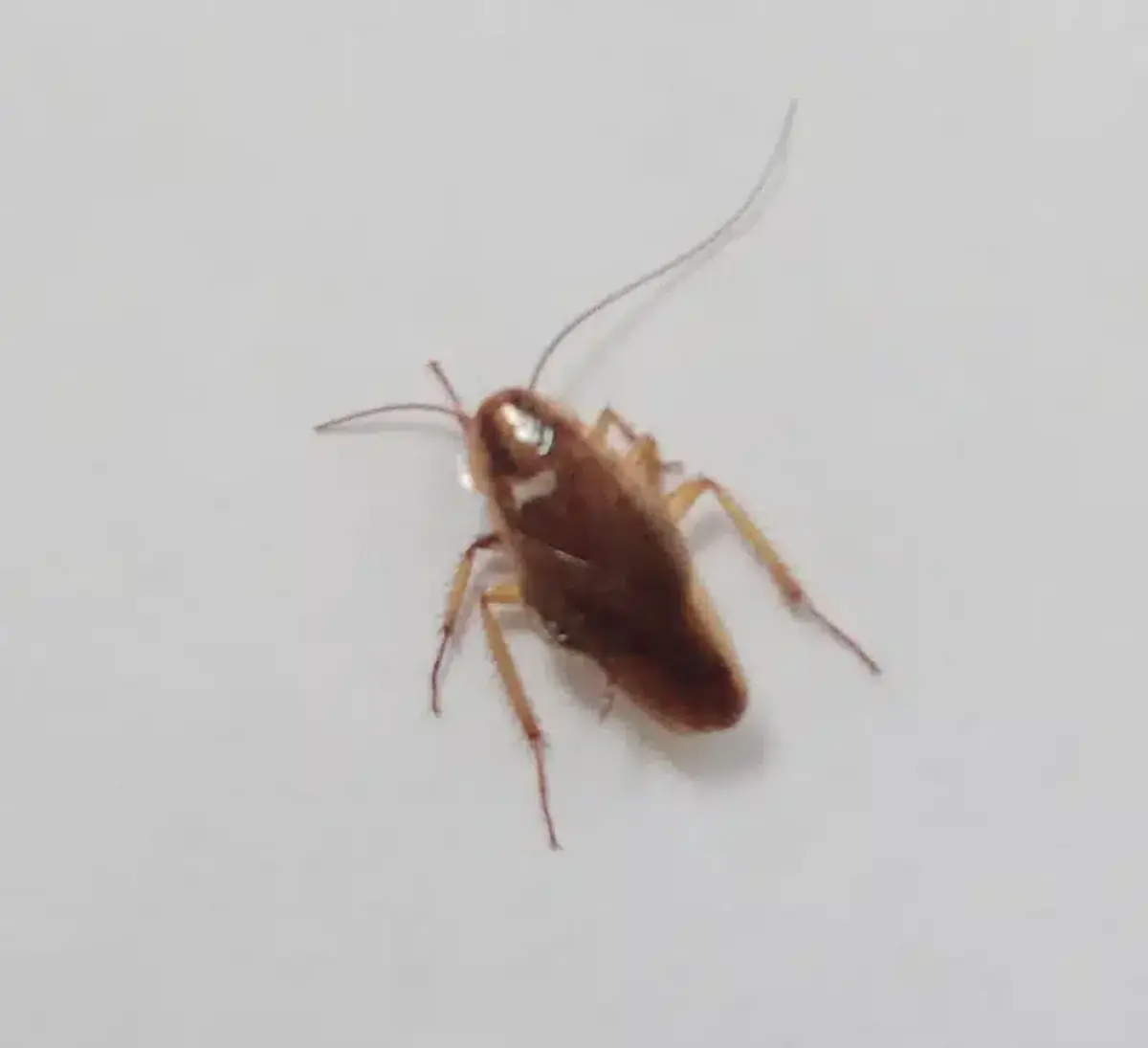
How to Identify a Baby Roach vs. Other Pests
To identify a baby cockroach correctly, look for these key features: six long, spiny legs, long antennae that are constantly moving, and a flattened body shape. Baby cockroaches start to look more and more like their adult counterparts with each molt, maintaining the same basic proportions.
Size of a baby cockroach alone isn’t enough for identification—you need to observe the overall body shape and movement patterns. Baby roaches usually move in quick, darting motions and tend to run toward dark cracks and crevices when disturbed.
Where to Find Baby Cockroaches in Your Home
Baby cockroaches in your home typically hide in the same areas as adults but can squeeze into even smaller spaces. They prefer cracks about 5mm wide with high humidity, warmth, and darkness. Common hiding spots include the spaces under refrigerators, behind dishwashers, and in wall voids behind kitchen backsplashes.
Areas like basements and crawl spaces attract baby oriental roaches and baby american cockroaches, which prefer cooler, damper conditions. Baby german roaches usually stay closer to food and water sources in kitchens and bathrooms, often hiding inside motor housings of appliances.
I’ve found baby roaches hiding in surprising places during inspections—inside electronics, behind picture frames (especially brown-banded cockroach nymphs), and even in the tiniest gaps around plumbing fixtures. They like to hide in spaces where they can touch surfaces above and below them.
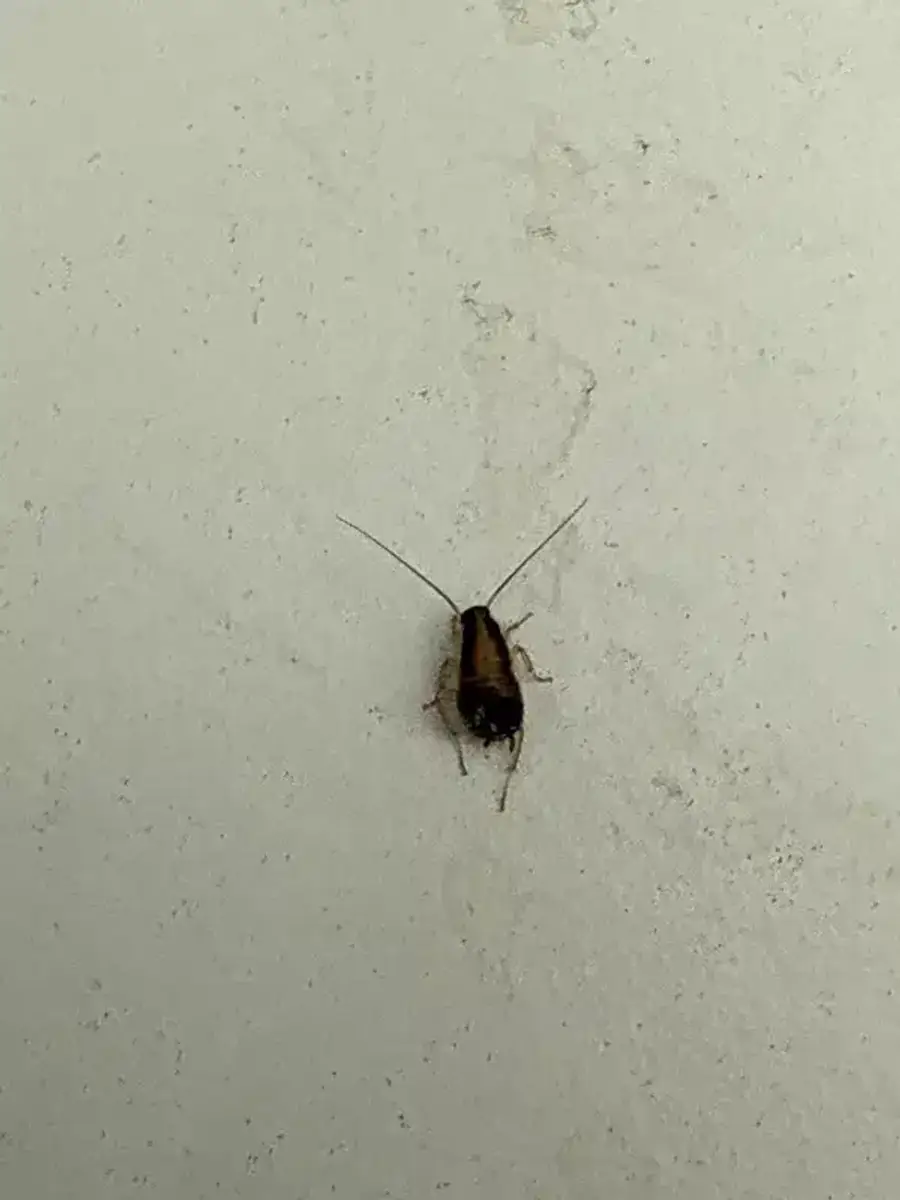
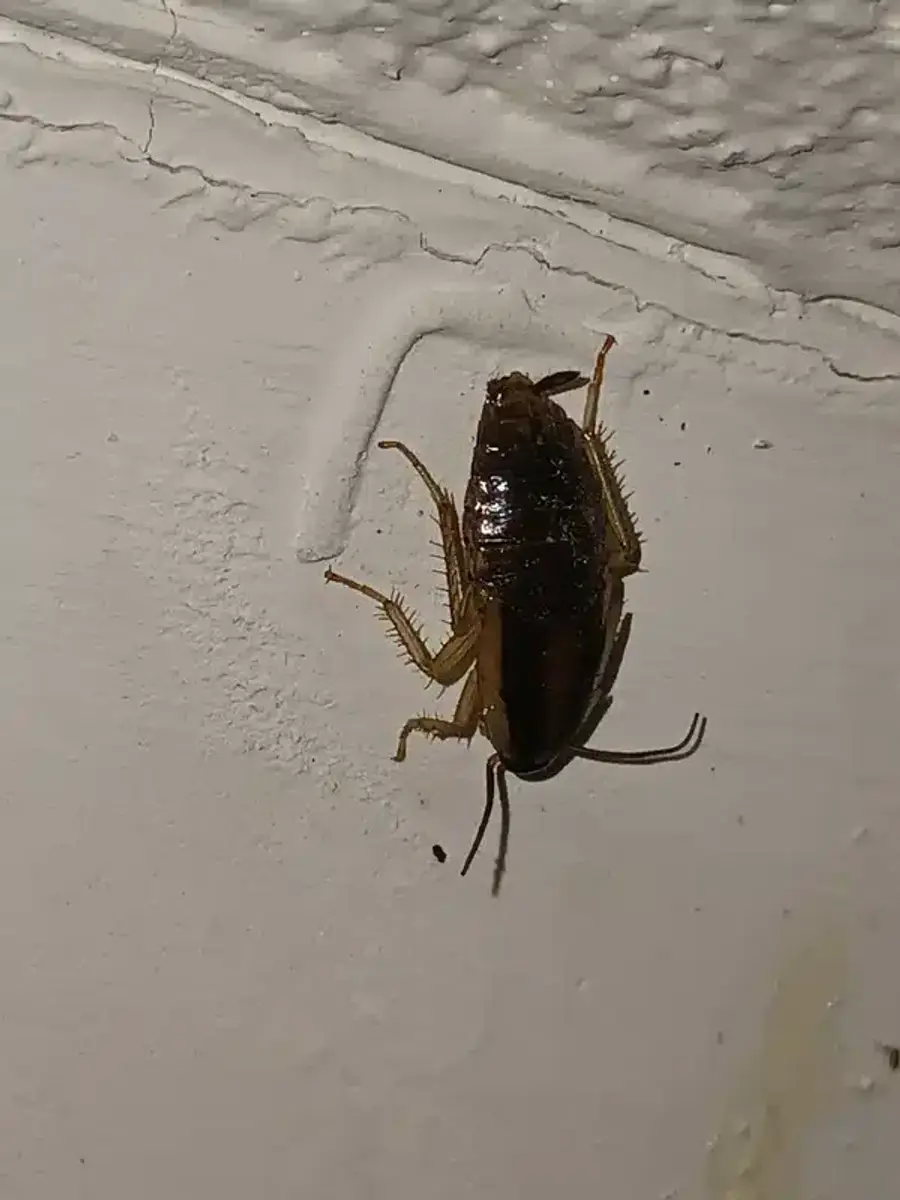
Preferred Environmental Conditions
Baby roaches in your home seek out food and water sources just like adults. Newly hatched baby cockroaches can survive on surprisingly little—crumbs, grease residue, and even the glue from book bindings or wallpaper. They need access to moisture within a few days of hatching.
Temperature plays a huge role in where you’ll find baby cockroaches. Warmer areas like near water heaters, in electronic devices, or close to cooking appliances provide ideal conditions for rapid development. Cooler areas slow their growth but don’t eliminate the population.
What Baby Roaches Reveal About Infestation Age
The size of a baby cockroach you find can tell you roughly how long the infestation has been active. Very small nymphs (3-5mm) indicate recent hatching, while larger baby roaches approaching adult size suggest the colony has been established for months.
If you see a baby cockroach that’s about half the size of an adult, the infestation is well-established. For german cockroach species, this typically means 3-4 weeks minimum. For american cockroaches, larger nymphs indicate the infestation could be 3-6 months old or more.
The presence of multiple instar stages is the clearest indicator of an ongoing breeding cycle. When I find baby roaches of varying sizes during inspections, it tells me the population has been reproducing continuously for several generation cycles.
Why Professional Treatment Is Critical for Baby Cockroach Infestations
When baby cockroaches are confirmed, DIY products typically won’t be enough to eliminate the breeding population. Over-the-counter sprays might kill adult roaches you see, but they rarely reach the hidden areas where baby roaches develop. Products like boric acid or diatomaceous earth can help, but they’re insufficient against established breeding colonies.
What does the science say?
According to UC IPM research, integrated pest management approaches combining multiple treatment methods show 90%+ efficacy rates against cockroach populations compared to 40-60% for single-method approaches. Professional treatments use synergistic combinations of baits, growth regulators, and residual sprays that target different life stages simultaneously.
Professional treatment becomes essential because registered technicians can access wall voids, identify all harborage areas, and use targeted baits that baby roaches will carry back to their colonies. Integrated pest management approaches require professional-grade materials and expertise to break the breeding cycle effectively.
The longer you wait after spotting baby roaches, the harder and more expensive treatment becomes. One fertilized female german cockroach can theoretically produce over 30,000 descendants in a year under ideal conditions. Early intervention when nymphs are first spotted prevents this exponential growth.
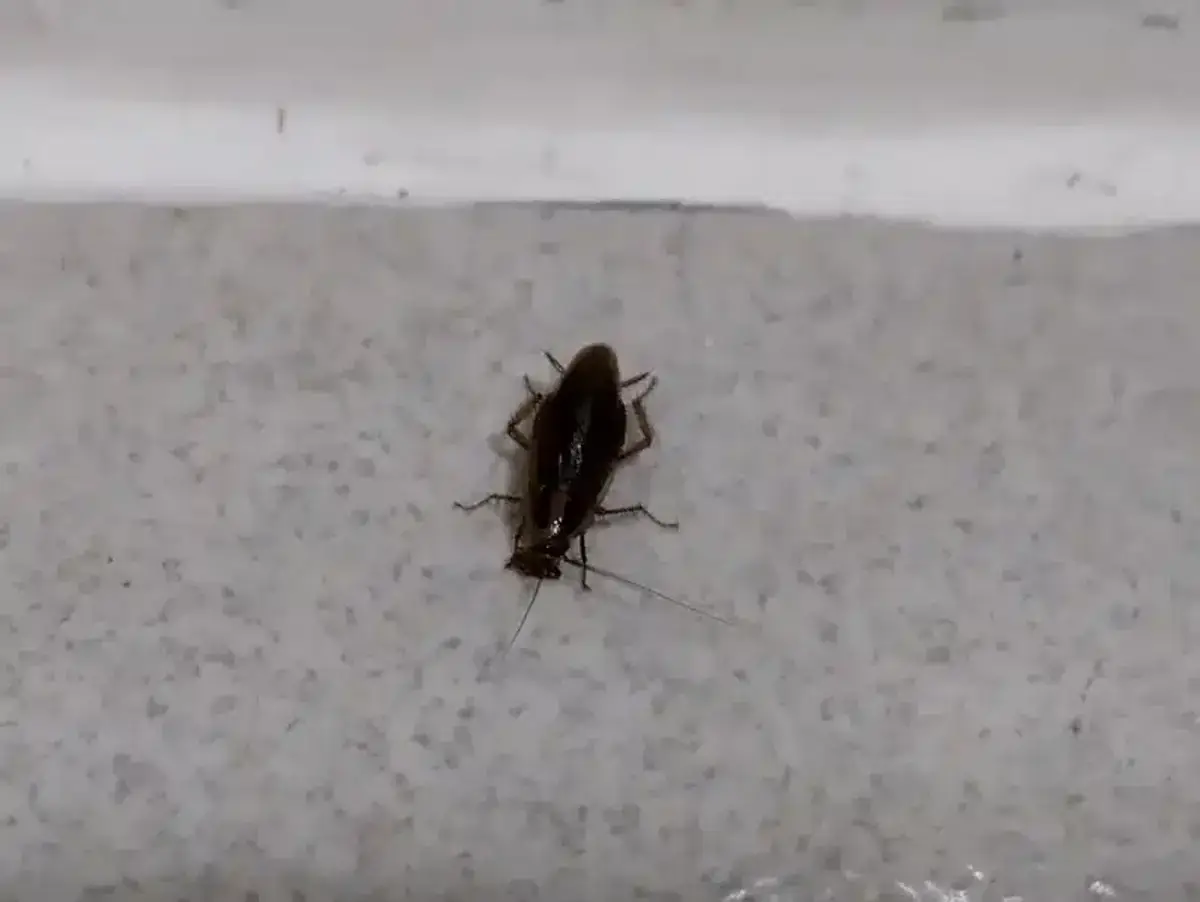
Breaking the Breeding Cycle
Critical Fact
Baby cockroach danger develops when treatment only targets visible adults. One German cockroach female can produce over 30,000 offspring in a single year, making comprehensive treatment of all life stages essential for elimination.
Successful treatment requires targeting both adult cockroaches and their offspring simultaneously. Professional treatments use growth regulators that prevent successful molting and reproduction, breaking the cycle at multiple points.
Our approach involves thorough inspection, targeted baiting, and follow-up monitoring to ensure the entire population is eliminated. We use products that baby roaches will encounter in their normal movement patterns, creating a comprehensive elimination strategy rather than spot treatments.
Immediate Action When Baby Roaches Are Found
The moment you spot a baby roach, you should document the location and time, then begin looking for additional signs of infestation. Check areas near where you found the nymph for shed skins, droppings, or additional live insects. Remove any accessible food sources and eliminate standing water.
Don’t rely on seeing cockroaches to determine the scope of your problem. Baby roaches are excellent at hiding, and for every one you see, there are likely many more in hidden areas. Focus on cleanliness and moisture control while you arrange for professional inspection.
Timing is critical when you find baby cockroaches. Each day of delay allows more nymphs to mature and potentially reproduce. German cockroaches can complete their development in under two months, so rapid response prevents the problem from expanding exponentially.
Finding baby roaches means you’re dealing with an active, breeding cockroach population that requires professional treatment to eliminate completely. After four years of experience treating cockroach infestations throughout the DC metro area, I’ve learned that early identification and prompt action make all the difference in resolving these problems effectively.
If you’ve spotted what you think might be baby cockroaches in your home, don’t wait to address the issue. Our family business has been helping local homeowners eliminate cockroach infestations for over 50 years, and we understand how to identify baby cockroaches and eliminate entire breeding populations. Contact us at 703-683-2000 or email us at info@bettertermite.com for a thorough inspection and treatment plan.
Frequently Asked Questions
Below are the questions we hear most often when homeowners spot nymphs. The full answers appear in the FAQ section at the bottom of the page.
How to tell if it's a baby roach?
+
To identify a baby roach, look for a small, wingless insect with six spiny legs, long antennae, and a flattened body shape similar to adult cockroaches. Baby roaches move quickly and tend to run toward dark cracks when disturbed. They range from 3mm to about half an inch depending on species and age.
Why am I seeing tiny baby roaches?
+
Seeing tiny baby roaches means you have an active breeding population of cockroaches in your home. Female cockroaches have been reproducing successfully, and the infestation has been established for at least several weeks. The presence of baby roaches indicates the problem will continue growing without professional treatment.
What is mistaken for baby cockroach?
+
Baby cockroaches are commonly mistaken for bed bug nymphs, carpet beetles, or booklice. Bed bugs are wider and more oval-shaped, carpet beetles have hard shells and can fly, and booklice are much smaller and softer. Baby roaches have distinctive long antennae and spiny legs that help distinguish them from these other insects.
Why am I seeing small roaches all of a sudden?
+
A sudden appearance of small roaches usually means eggs have recently hatched or environmental conditions have driven them out of their normal hiding spots. Changes in temperature, humidity, or disturbance from renovation can cause baby roaches to become more visible. This typically indicates an established infestation that's been present for weeks or months.
Are baby cockroaches dangerous?
+
Baby cockroaches dangerous situations arise from the same health risks as adults—they can carry bacteria like salmonella and contribute to allergen levels in homes. Their shed skins accumulate and can trigger asthma, especially in children. Additionally, their presence confirms active breeding, meaning the population will continue growing rapidly without intervention.
How fast do baby roaches grow?
+
Baby roach development speed depends on the species and temperature. German cockroach nymphs can become adults in 50-60 days under ideal conditions, while American cockroaches take 6-12 months. Baby roaches go through multiple molts, growing larger with each stage until they reach adult size and develop wings.
With five years of hands-on experience in the pest control industry, George Schulz is a registered technician with the Virginia Pest Management Association and a proud third-generation professional in a family business that's been protecting homes for over 57 years. He manages and trains a team of service pros while also leading internal research efforts—recently spearheading a deep-dive review of thousands of documents on pest control materials to hand-pick the most kid and pet friendly, most effective solutions tailored specifically for homes in the DC metro area.
